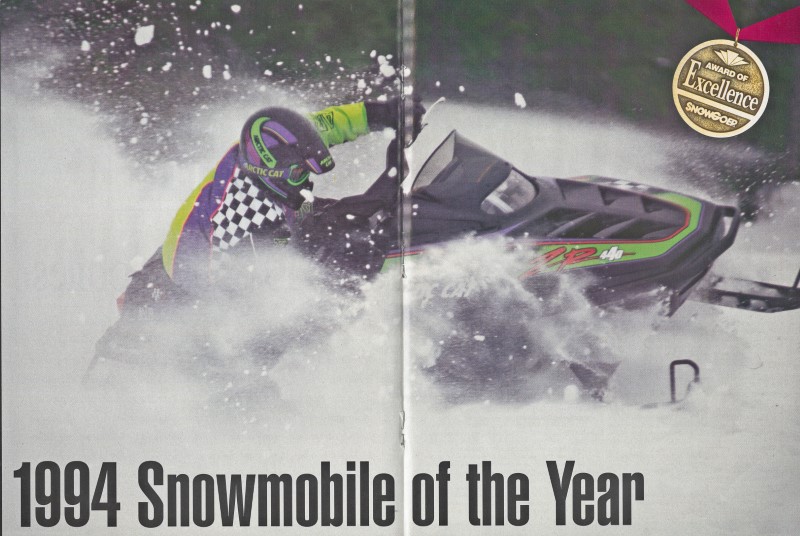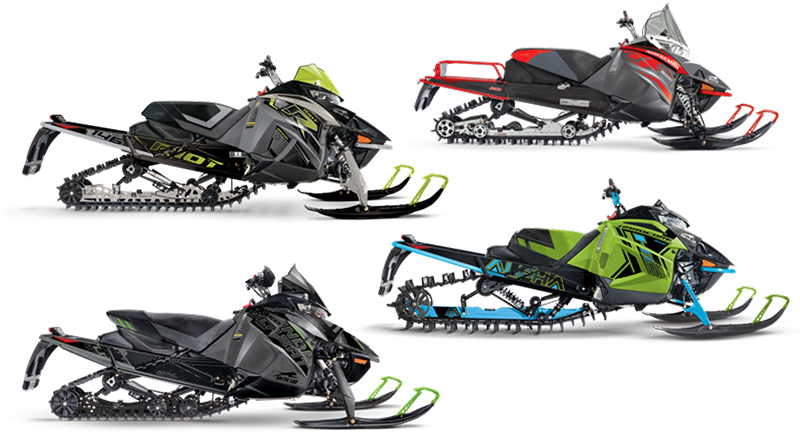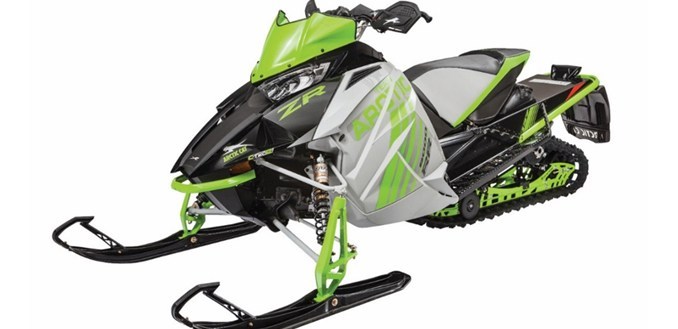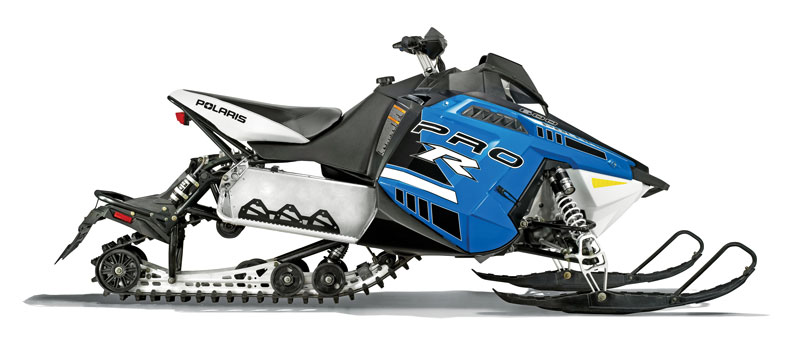 The Crossfire R was built for speed, and ours went fast.
The Crossfire R was built for speed, and ours went fast.
Out of the box — with studs, so not quite “box stock” — it turned a peak speed of 104 mph on radar. And with some clutch work from Speedwerx it cranked all the way up to 109 mph! No doubt the free-wheeling and lightweight M chassis helped enable these impressive top-end figures.
The low-slung sled cornered flat and stayed on track without pushing through the turns. If a trail is smooth and twisty, a Crossfire R is the sled to be on. The slippery seat and sculpted gas tank make it easy to transfer from side to side and lean into the turn.
It’s fun and almost rewarding to feel a sled respond this well to driver input and carve a turn with precision. Shifting weight from side to side while flicking the handlebars back and forth through tight trails in the woods or a chute down a river is a gas on this machine because it handles predictably, and the engine likes to play, too.
Its 794cc two-stroke powerplant came out in 2007 along with its 999cc Suzuki stablemate. We’ve always preferred the 800 to the liter engine because it’s smoother, quieter and has better all-around performance.

Power from our Camo Cat was flat down low, but response from the lower mid-range through the top-end was pretty firm. Average fuel mileage during a 575-mile trip last winter was 13.01 miles per gallon – a respectable figure from a big-bore two-stroke with outdated fuel injection technology.
While the chassis is great for going fast, it’s not as good at providing a comfortable ride on the trails, unless they’re smooth. The FasTrack rear suspension isn’t up to the task of handling big bumps or firm chop. Bump energy transfers through the skidframe and to the rider. Same for the AWS VI front end.
During a ride in northern Minnesota last winter we quickly learned that trying to keep up with an MX Z and an IQ over a section of sharp-edged, 1-foot moguls wasn’t possible, so we dialed ’er back before the sled tossed us into the trees.
As is usually the case with our Arctic Cat demo sleds, this one was reliable and easy to own. Add gas and oil, make adjustments; pull the rope and go. But on a late-season ride, the upper, left-shock mounting bolt sheared off inside the shock tower. Weird.
While ergonomics helped the sled handle well, they hurt its comfort rating. Ridiculously shallow footwells mean a driver can’t put his or her feet in far enough to strap into the chassis. In addition to the uneasiness a diver might feel, this causes tired thighs as those muscles have to be used — rather than using calf muscles when riding other sleds — to keep the driver from sliding into the gas tank. A taller seat would reduce this problem.
Wind protection and handlebars are other factors that affect a sled’s comfort rating. Fortunately the sled included the Infinite Rider Positioning adjustable handlebars as part of the LE package, along with the special camouflage graphics, so each rider could quickly and easily customize the bar setting. The flared windshield and cab provided good wind protection.





